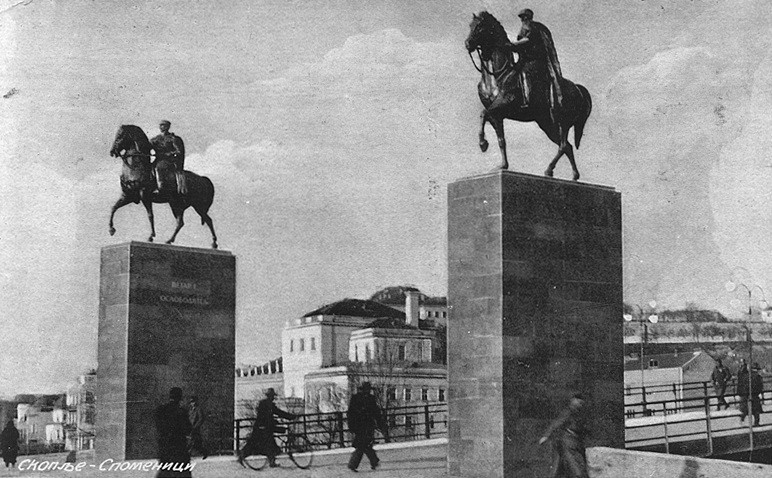Born on 4th May 1900 in Klanjec, Croatia, died on 10 May 1979 in Zagreb, Croatia, Antun Augustinčić was a prominent Croatian sculptor and one of the leading Yugoslavian artists after the Second World War. His most notable sculptures include the Peace monument which stands in front of the United Nations building in New York City and the Miner statue which stands in front of the International Labor Organization in Geneva.
Augustinčić stated his artistic education in 1918 at the Arts and Craft college in Zagreb, and later at the royal Academy of Arts and Crafts in 1922 under guidance of the great Croatian sculptor Ivan Mestrovic until his graduation in 1924. He then received a scholarship from the French government and continued his studies at the École des Arts Décoratifs and École des Beaux-Arts in Paris under the guidance of Jean Antoine Injalbert.
In 1925 and 1926 held his first exhibitions in Paris, before returning to Zagreb and exhibiting in Zagreb in 1926. In 1929 he was one of the founding members of the Earth Group) arts collective which brought together prominent left-oriented sculptors, painters and architects. He took part in several exhibitions organized by the group between 1929 and 1933, when he left the group, two years before it was banned by the authorities in 1935.
In 1930 Augustinčić created his first equestrian sculpture for the monument in Nish after his design won the competition. From then on equestrian statues became one the hallmarks of his career, notable examples being the monument to Joseph Piłsudski in Katowice, Poland(commissioned in the 1930s but placed in 1991) and his most notable work, the Peace monument, erected in front of the United Nations building in New York in 1954. In the late 1930s he also created a monument to King Alexander in Skopje in 1937 (which were later destroyed in World War II). Other notable works from this period include a number of family tomb headstones at the Mirogoj Cemetery in Zagreb, including Sorrow (1930), Moses (1932) and Icarus(1935).
In 1940 he became a corresponding member of the Yugoslav Academy of Sciences and Arts (JAZU). During the war Augustincic remained active and was commissioned to sculpt a bust of the Croatian Poglavnik Ante Pavelić. In 1946 he became a professor at the Academy of Fine Arts in Zagreb, and after the war he was made a member of the People’s Assembly.
In 1949 he was made a full member of the Yugoslav Academy. In the years after the war he made a number of notable sculptures, such as the monuments to Josip Broz Tito in Tito’s birthplace of Kumrovec (1948), politician Moša Pijade (1953), violinist Zlatko Baloković (1962), 16th century Croatian writer Marin Držić (1963) and many others. His most important sculpture in this period is The Carrying of the Wounded, which evolved from a sketch made in 1944 and which he used as a recurring motif in a number of monuments he created in the following three decades, one of which can be seen in front of the Faculty of Medicine in Zagreb.
Stories
Against All Odds
“When life throws you a lemon, throw it back” – a slogan written by American writer and lecturer Dale Carnegie
